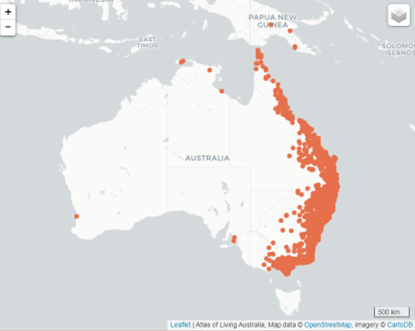Dianella caerulea –
Blue Flax Lily
H: 50cm
W: 50cm
Strappy grass with prolific sprays of purple flowers in spring and summer followed by bright indigo berries. The berries can be used for dyeing and the leaves can be used for weaving.
Edible uses: The blue fruits of the Dianella are eaten raw. They have a sweet flavour, which becomes nutty once the seeds are chewed.
Pests and Diseases: Mites, aphids and Mealybugs can be a problem if ina n area that is getting too much moisture. Ensure the plants are mulched well and if too crowded, lift the clump and thin out by division.
Uses in the garden: Dianella caerulea likes to fill out an area so great for spots in the garden you would like to fill with a hardy and attractive grass.
Position: They like a part sun position and are very hardy.
Propagation: The seed can be propagated in late summer but the easiest way is to lift and divide the clumps.
Growing Range: East Coast from Queensland to Victoria and into Tasmania.
Photo by Narelle Happ
Photo by tyra_shoulder under Creative Commons License
Photo by jonno_roche under Creative Commons License
Source: Aunty Jenni Tillett and Corinne Payne. Gumbaynggirr, Bundjalung, Ngarrabul and Walbanja Yuin Women.
Born and raised on Dharawal/ Tharawal country.
Author Terry Rankmore
Issuing Body Illawarra Aboriginal Corporation
Sponsoring Body Environmental Trust (N.S.W)
*Medicinal Use – Caution: Some plants are harmful and can also be toxic. Do not use
plants for medicinal use unless consulting with a medical practitioner.
*This information is a guide only. Correct identification is required before trying any native bush foods. Care must be taken to not consume plants in an environment where pesticides or herbicides may have been used.







